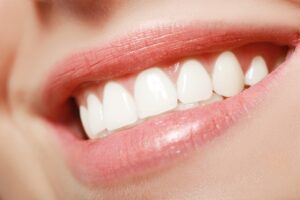 Dental crowns and veneers are common restorations that both offer cosmetic and restorative benefits. Although they have many overlapping advantages, there are also several differences between them. Here’s what you need to know to choose the best restoration to improve your smile.
Dental crowns and veneers are common restorations that both offer cosmetic and restorative benefits. Although they have many overlapping advantages, there are also several differences between them. Here’s what you need to know to choose the best restoration to improve your smile.
The Benefits of Porcelain Veneers
Porcelain veneers are among the most popular cosmetic procedures because they can correct many issues using a minimally invasive procedure. A veneer is a thin porcelain shell that covers the front side of a tooth, instantly improving its size, shape, and color. Bonding veneers to the teeth that show when you smile can allow you to cover various aesthetic concerns at once, including:
- Stains and Discoloration
- Chips and Cracks
- Shorter Than Average Teeth
- Gaps Between Teeth
Process of Getting Veneers
Your teeth and gums must be healthy before getting veneers. Your dentist will remove a small amount of enamel to prep your teeth. This ensures a strong bonding surface. They’ll take a digital impression of your mouth to craft your veneers. It can take a couple of weeks, so your dentist will apply temporary restorations while you wait. Once your permanent veneers are bonded to your teeth, your flawless new smile can last for a decade or longer.
The Benefits of Dental Crowns
A dental crown differs from a veneer because it covers the entire surface of a tooth down to the gum line. This means more of your tooth will be reshaped to allow the restoration to fit over it. Ceramic crowns can improve the appearance of your teeth, but your smile can look bulky if they are placed on several teeth. Crowns are most often recommended for their restorative benefits, like:
- Protecting a Weakened Tooth
- Repairing a Chip or Crack
- Supporting a Dental Bridge
- Covering an Unattractive Tooth
- Along with Root Canal Therapy
Process of Getting a Dental Crown
Your dentist will perform any preparatory treatments, like a root canal, before reshaping your tooth. They’ll take a digital impression, which is used along with CAD/CAM technology to design your restoration. The information is sent to a CEREC milling machine, where your crown will be crafted and ready to cement in place in about 1 hour. Your crown will look like a real tooth and can last for 10 years or more with the correct care, like brushing and flossing.
Your dentist will examine your mouth and learn more about your goals to determine which treatment is right for you. No matter the method, you’ll enjoy results that look and feel natural.
About Dr. Nada Elsadig
Dr. Elsadig earned his dental degree from the Howard School of Dentistry and has continued her training in prosthodontics, endodontics, and cosmetic dentistry. She is a reputable dentist, who has published many articles in My Health Magazine. If you’re ready to improve your smile, request an appointment through her website or call her office at (703) 584-5883.
